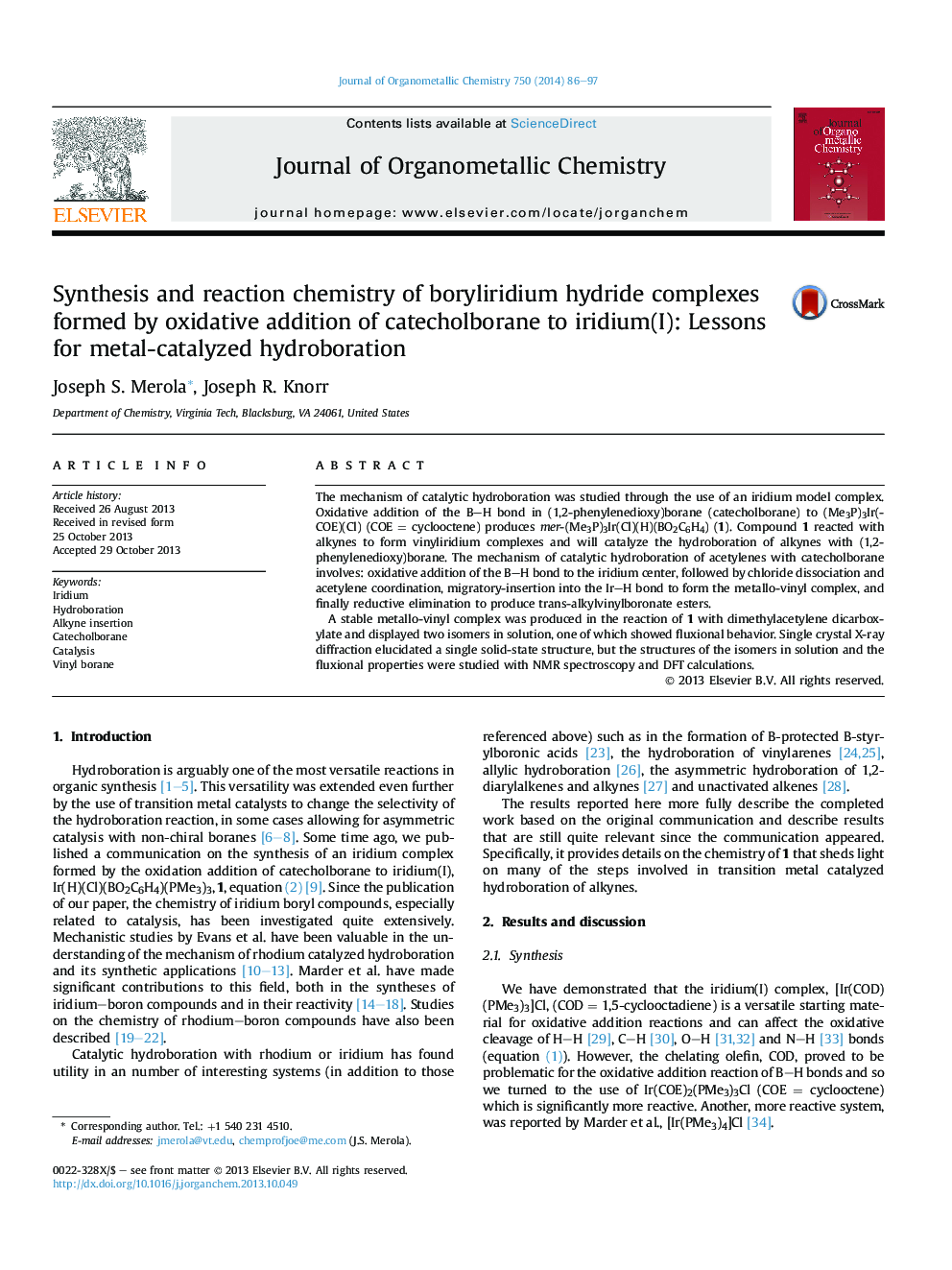| Article ID | Journal | Published Year | Pages | File Type |
|---|---|---|---|---|
| 1322550 | Journal of Organometallic Chemistry | 2014 | 12 Pages |
•All intermediates in a catalytic hydroboration process have been fully characterized.•A stable iridium catecholboryl iridium vinyl complex was characterized by X-ray diffraction.•The vinyl iridium complex from dimethylacetylenedicarboxylate shows fluxionality.
The mechanism of catalytic hydroboration was studied through the use of an iridium model complex. Oxidative addition of the B–H bond in (1,2-phenylenedioxy)borane (catecholborane) to (Me3P)3Ir(COE)(Cl) (COE = cyclooctene) produces mer-(Me3P)3Ir(Cl)(H)(BO2C6H4) (1). Compound 1 reacted with alkynes to form vinyliridium complexes and will catalyze the hydroboration of alkynes with (1,2-phenylenedioxy)borane. The mechanism of catalytic hydroboration of acetylenes with catecholborane involves: oxidative addition of the B–H bond to the iridium center, followed by chloride dissociation and acetylene coordination, migratory-insertion into the Ir–H bond to form the metallo-vinyl complex, and finally reductive elimination to produce trans-alkylvinylboronate esters.A stable metallo-vinyl complex was produced in the reaction of 1 with dimethylacetylene dicarboxylate and displayed two isomers in solution, one of which showed fluxional behavior. Single crystal X-ray diffraction elucidated a single solid-state structure, but the structures of the isomers in solution and the fluxional properties were studied with NMR spectroscopy and DFT calculations.
Graphical abstractIn the catalytic cycle depicted in the abstract, all steps have been studied in detail. The iridium boryl hydride was isolated and structurally characterized by spectroscopies and X-ray crystallography and all subsequent steps were characterized by spectroscopy.Figure optionsDownload full-size imageDownload as PowerPoint slide
